Bias Variance Tradeoff#
Let’s start with IceCream#
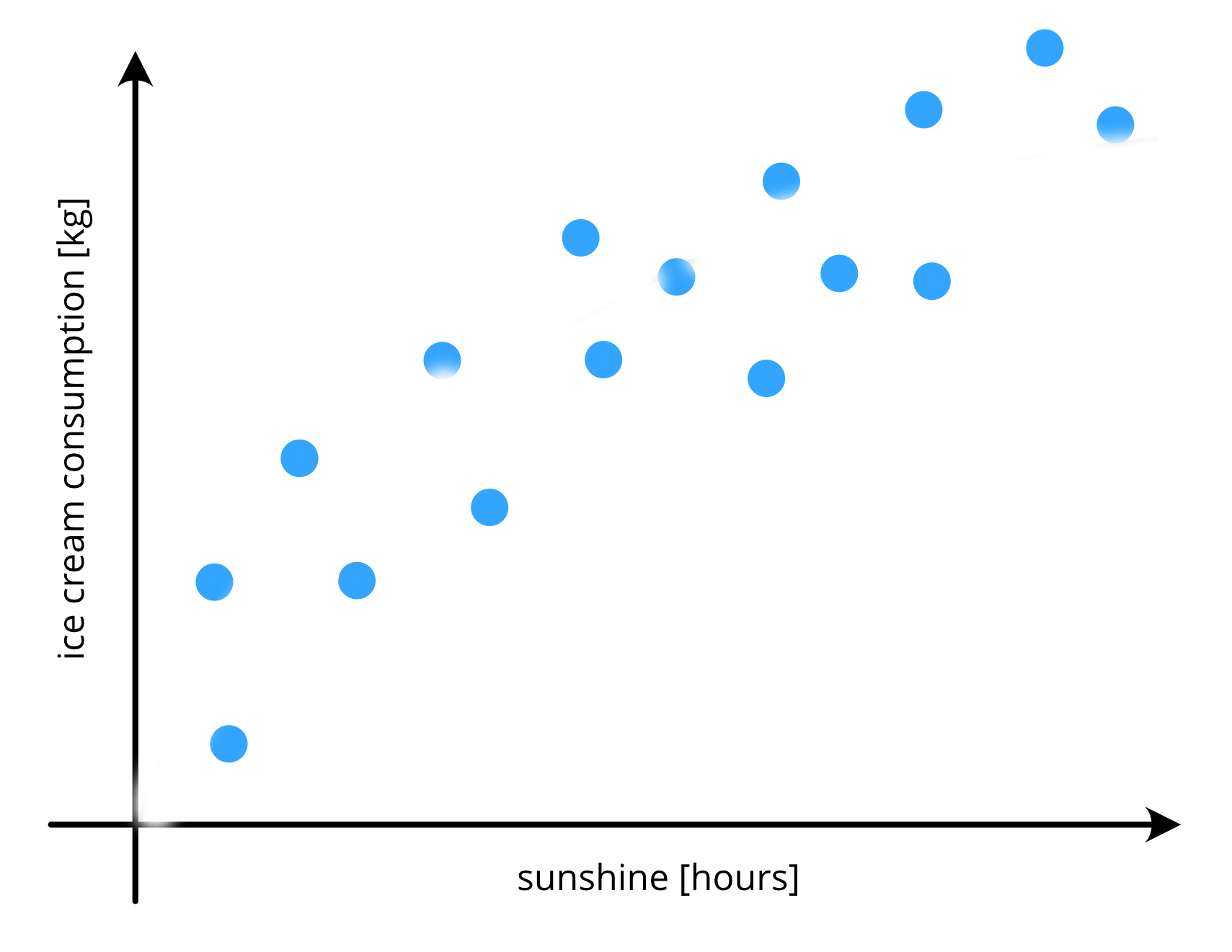
Let’s start with IceCream#

Visual Approach#
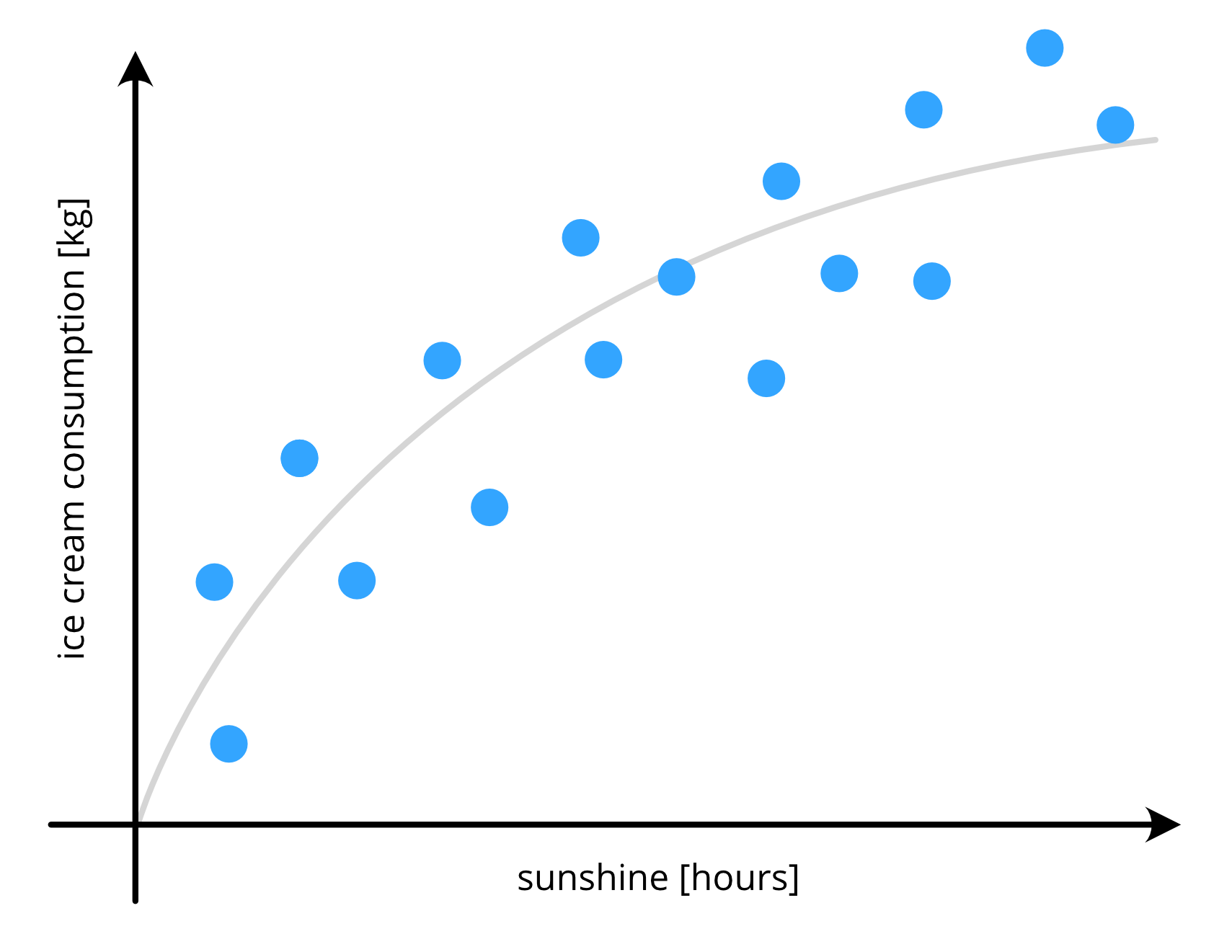
Why is it necessary to split the data into train and test?#
Data is typically split into a train and a test set.
to evaluate how the model performs on unseen data
i.e. if the model ‘generalises’ welltypical splits are 70% train data (or more) and 30% test data (or less)
sometimes an additional validation set is used
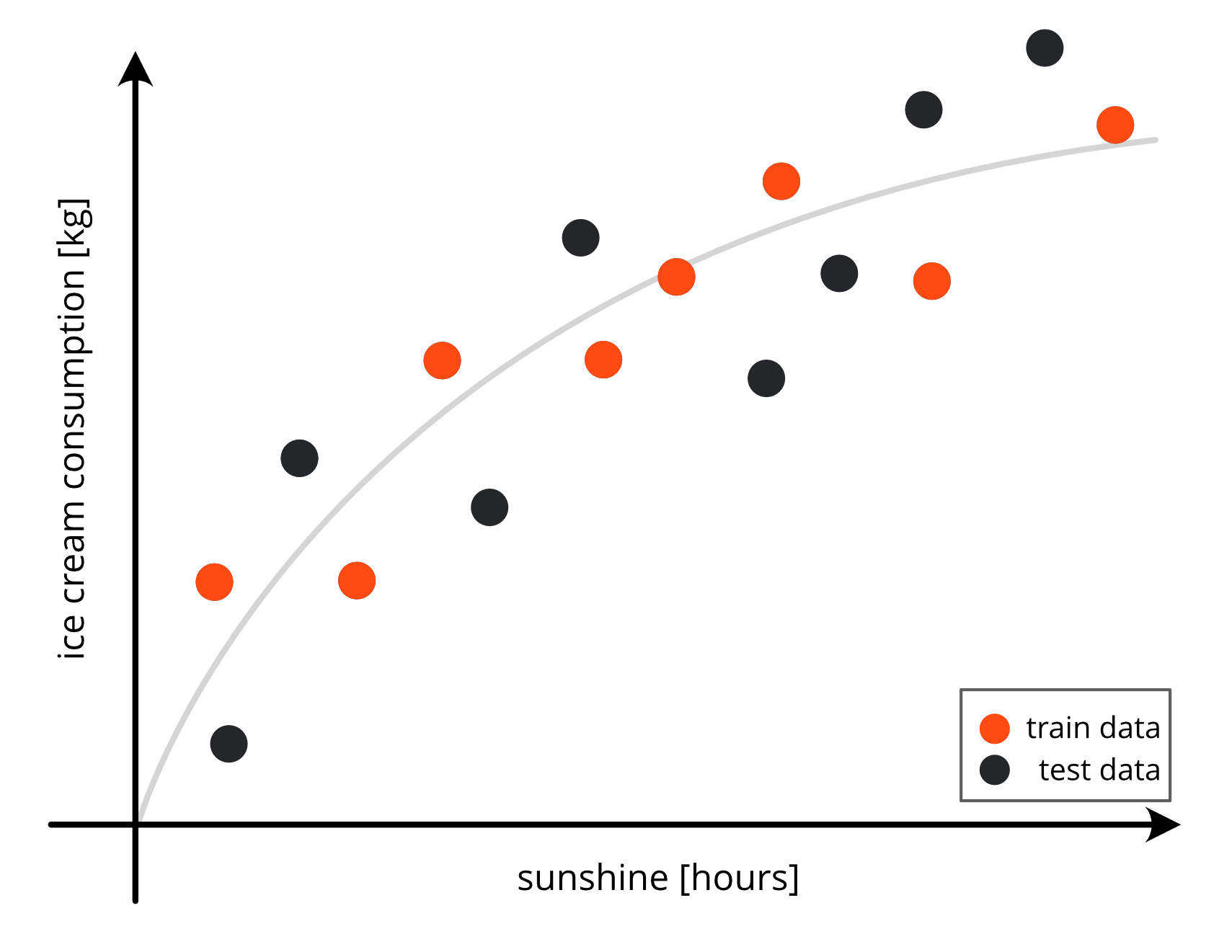
Simple Model#
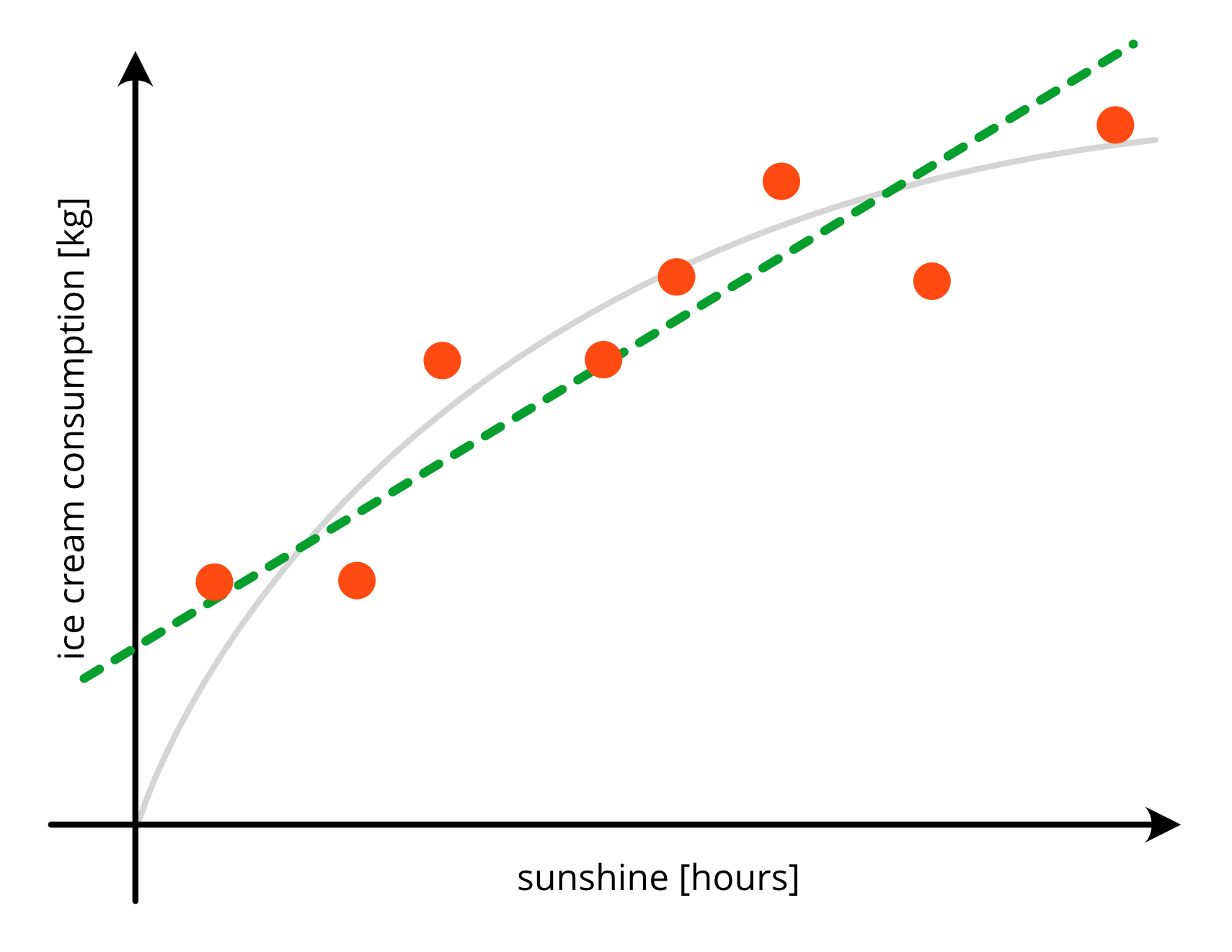
Complex Model#
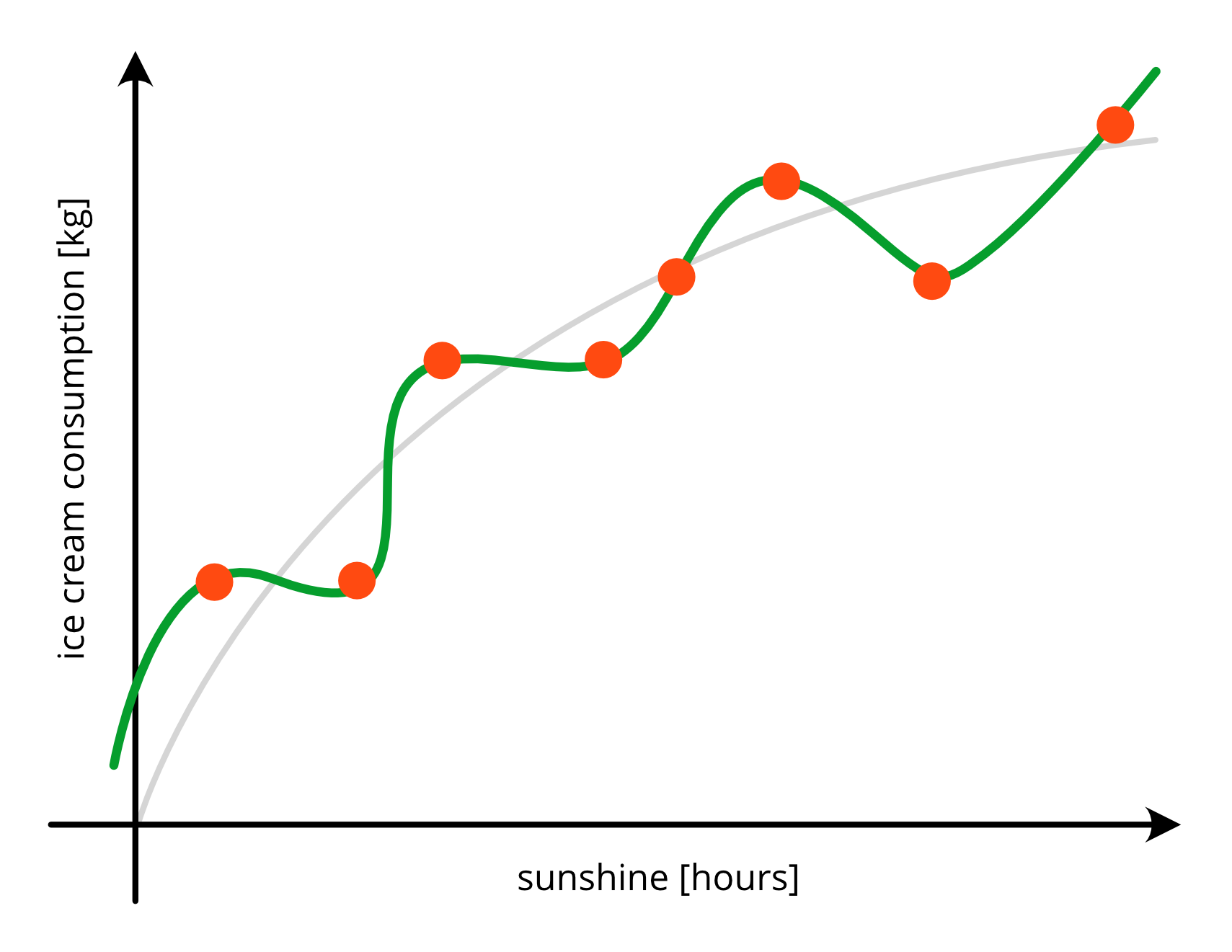
Train Data Residuals#
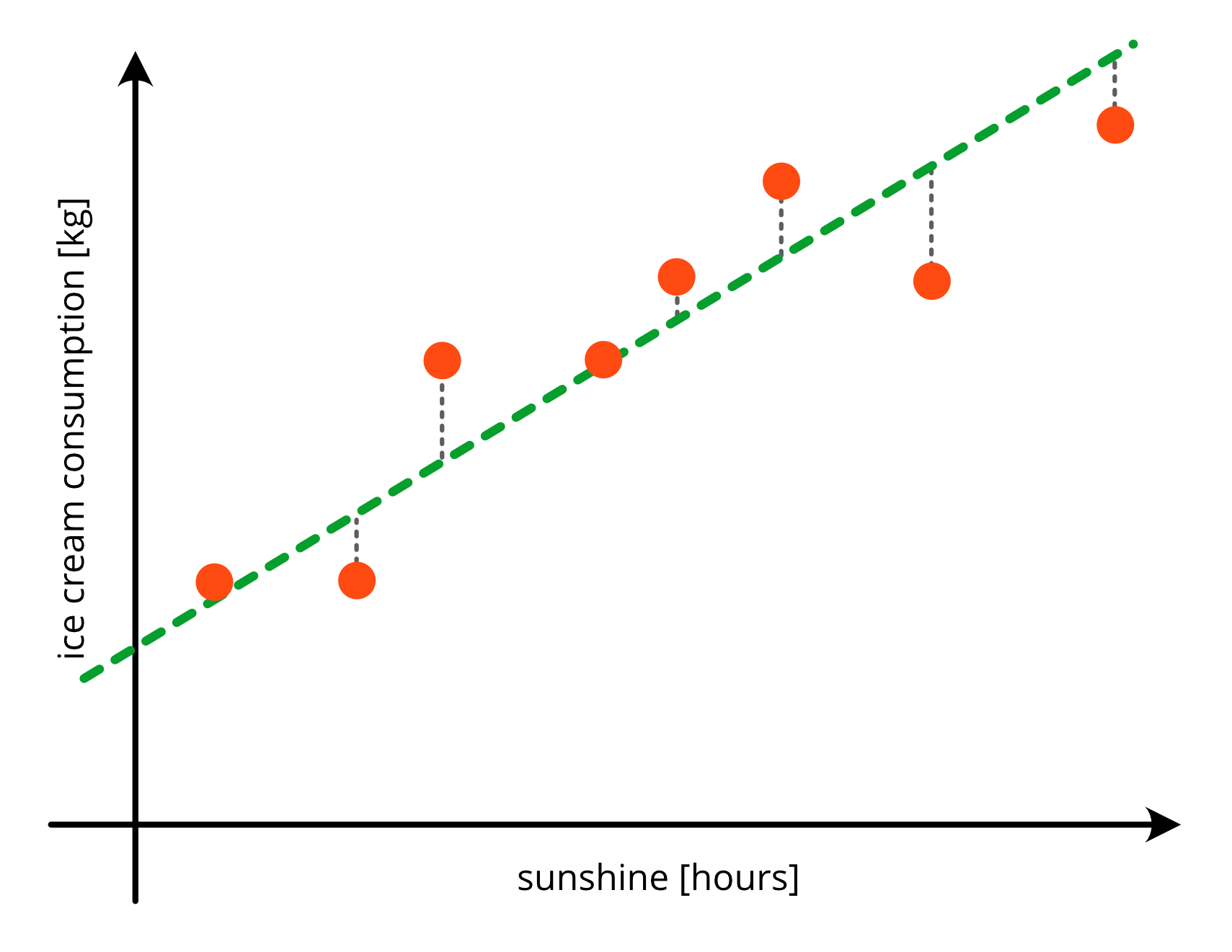
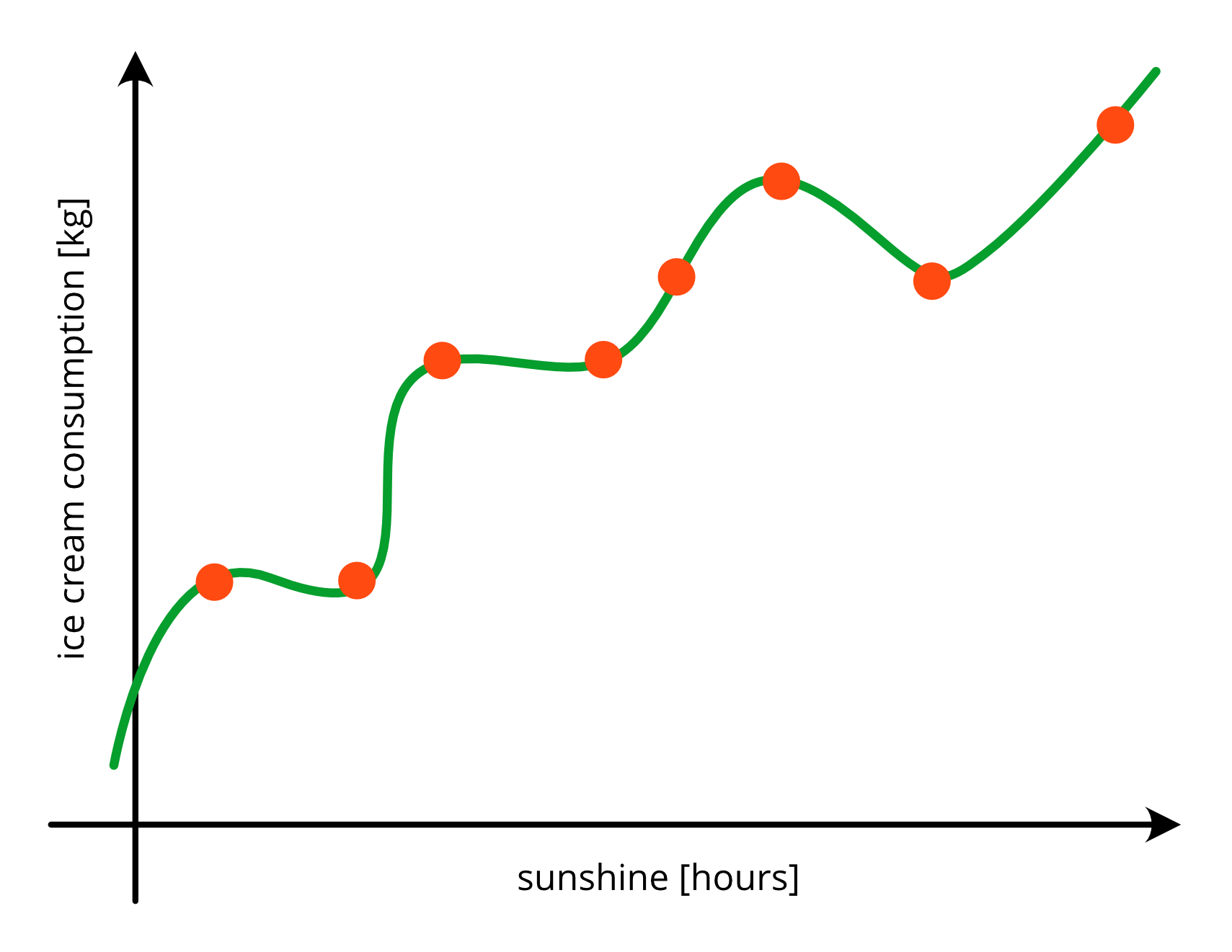
Test Data Residuals#
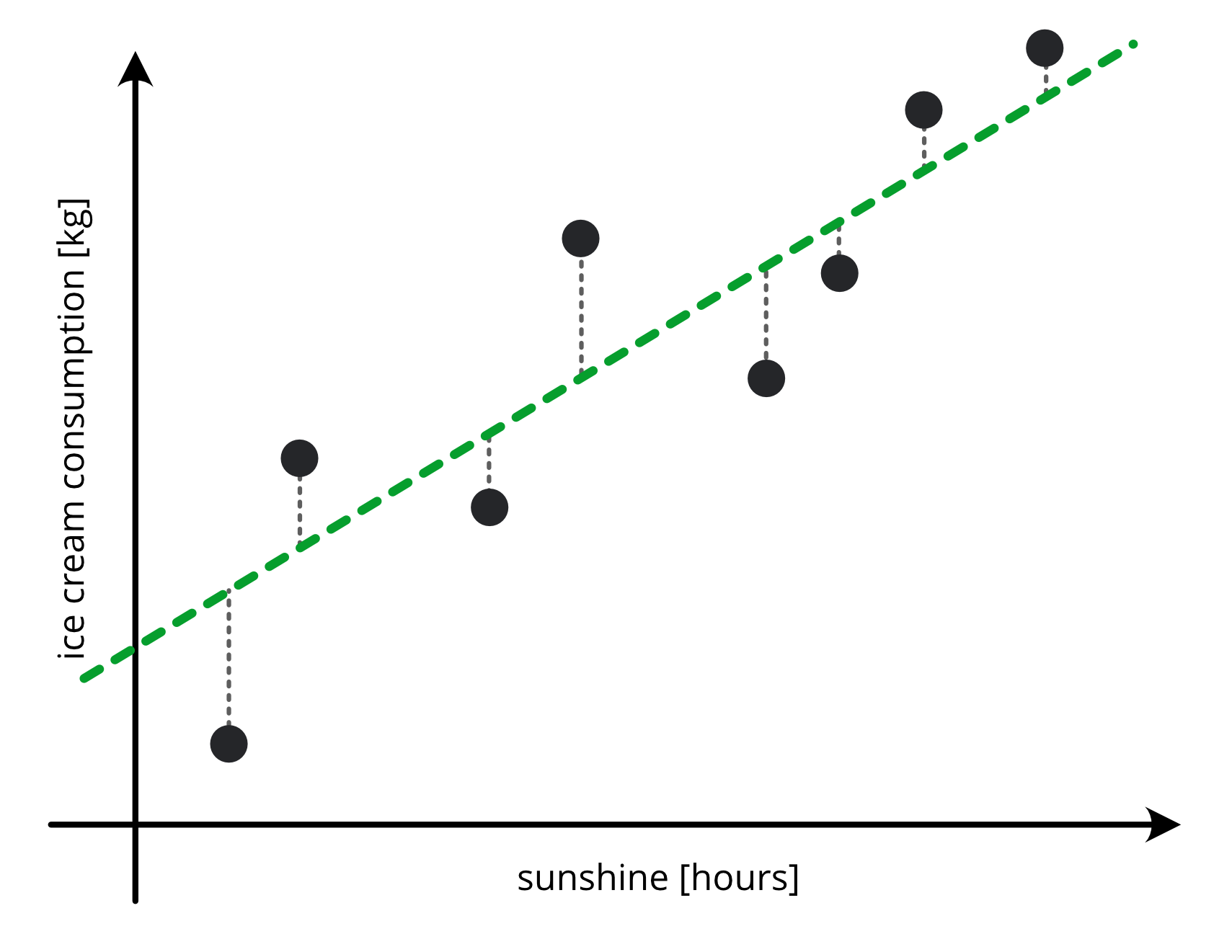
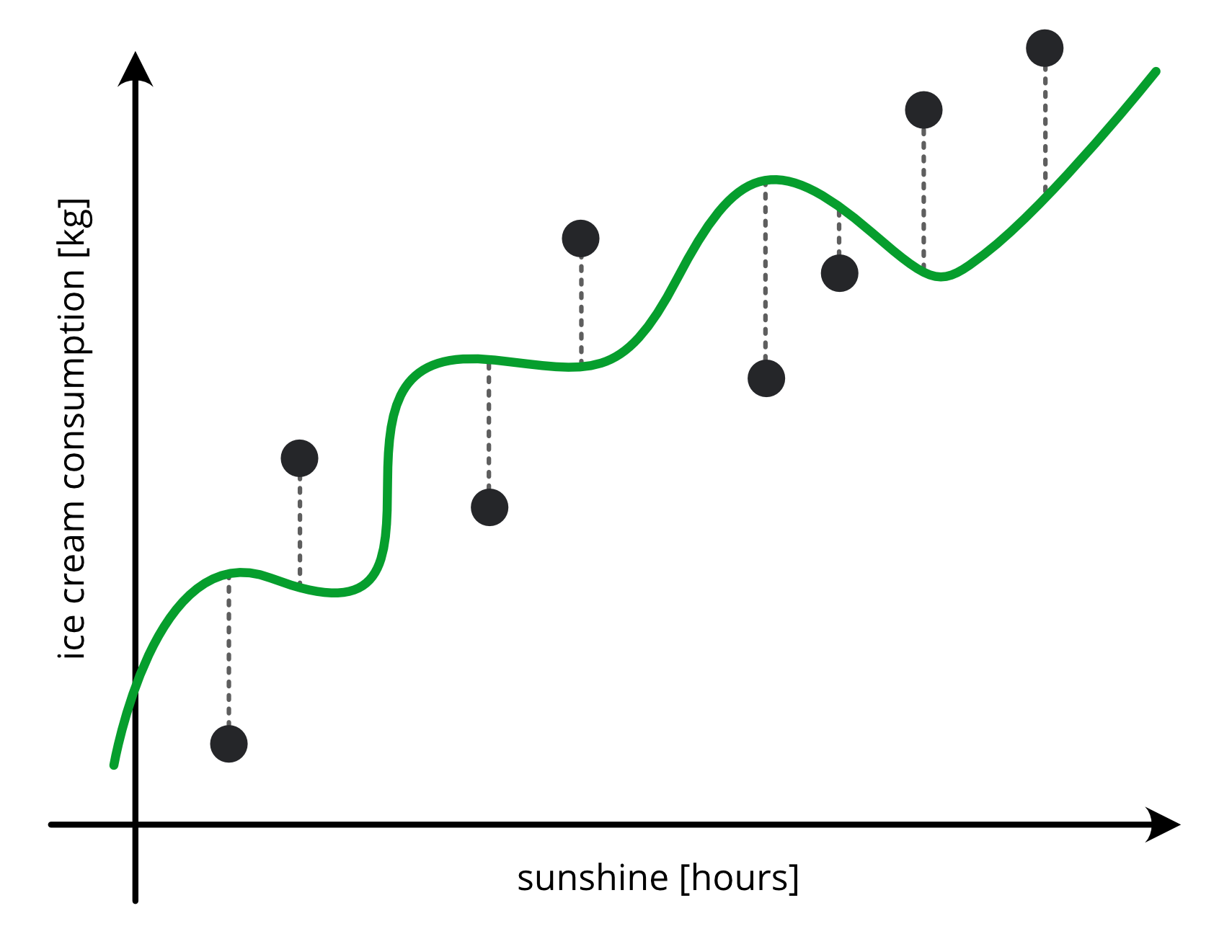
Machine Learning Terminology#

Too simple model:
high bias
under-fits the data
low variance
generalizes better on new data

Too complex model:
low bias
over-fits the data
high variance
generalizes bad on new data
Machine Learning Terminology#

Too simple model:
high bias
under-fits the data
low variance
generalizes better on new data

Too complex model:
low bias
over-fits the data
high variance
generalizes bad on new data
Loss and Cost functions#
Loss function
The loss function quantifies how much a model \(f\)‘s prediction \(\hat{y}=f(x)\) deviates from the ground truth \(y=y(x)\) for one particular object \(\mathbf{x}\).
So, when we calculate loss, we do it for a single object in the training or test sets. There are many different loss functions we can choose from, and each has its advantages and shortcomings. In general, any distance metric defined over the space of target values can act as a loss function.
Cost function
The cost function measures the model’s error on a group of objects. So, if L is our loss function, then we calculate the cost function by aggregating the loss L over the training, validation, or test data.
Linear Regression#
MSE (mean squared errors) here is an example of a cost function - we’ve aggregated the loss of individual predictions into a single value we can use to gauge the quality of our model.
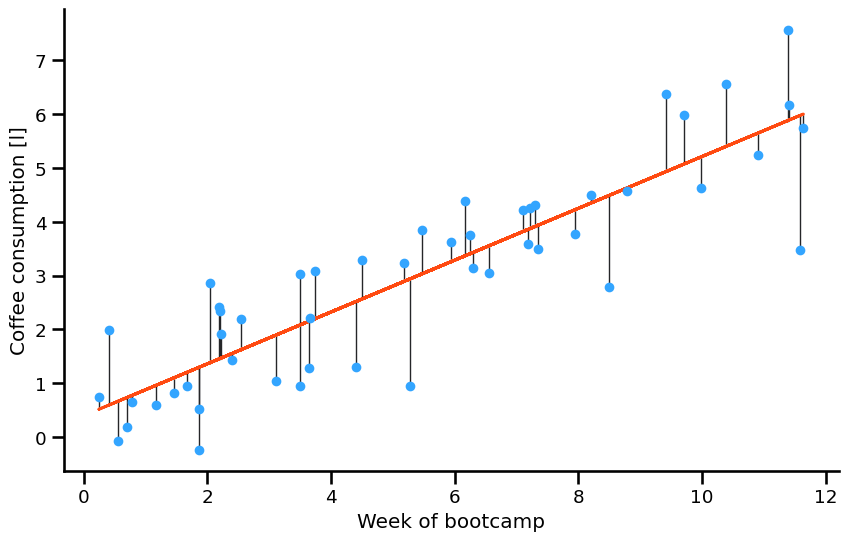
Optimal model and prediction for linear regression#
In frequentist statistics, we make a point estimate of beta depending on the dataset D
Estimators#
Assumption for estimators
- Dependent on the data:
Different datasets give different estimation values
\[\hat{y}(x,\;{\cal D})\;\;\;\;\;{\cal D}=\{\left(x_{1},\;y_{1}\right), \text{...}, (x_{n},\;y_{n})\}\] - Data is randomly sampled
No obvious patterns
- Parameters are considered to be fixed
Data Generating Process (DGP):\[y=f(x)=\beta_{0}+\beta_{1}x+\epsilon\]
Estimates#
We rarely have money/resources to measure everything
So we will have samples of the population which we hope to be representative of the whole population
The more data we have the more confident we are in the estimates
Ideally: the results drawn from our experiments are reproducible
In Data Science most metrics omit the word “estimate”, nevertheless most of the metrics we use are estimates
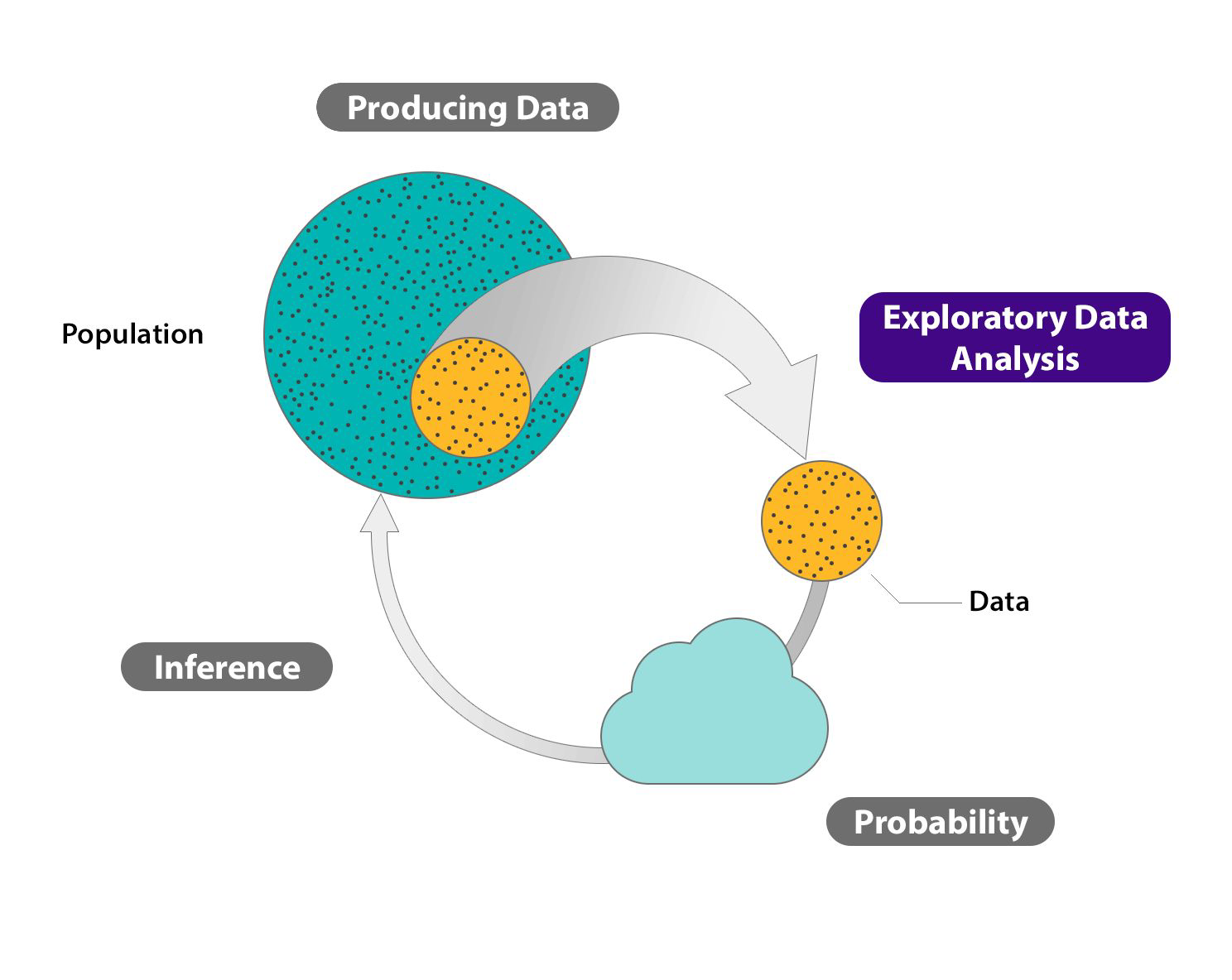
Error Decomposition#
Bias#
Bias: simplifying assumptions made by a model to make the target function easier to learn. (“How far away are the decisions from the data.”)
Underfitting the training data
Making assumptions without caring about the data
Model is not complex enough
Linear algorithms tend to have high bias, this makes them fast to learn and easier to understand but less flexible.
Variance#
Variance is the amount that the estimate of the target will change if different training data was used.
How sensitive is the algorithm to the specific training data used.
Overfitting the training data
Being extremely perceptive of the training data
Model is too complex
The Bias-Variance-Tradeoff#
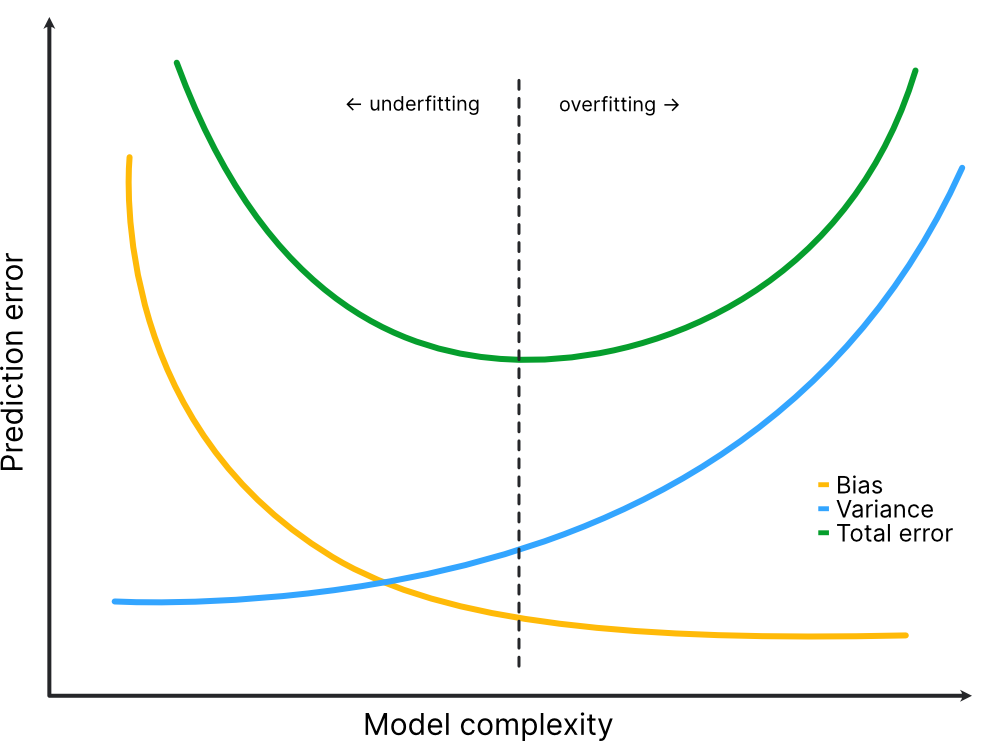
Bulls-eye - a model that predicts perfectly#
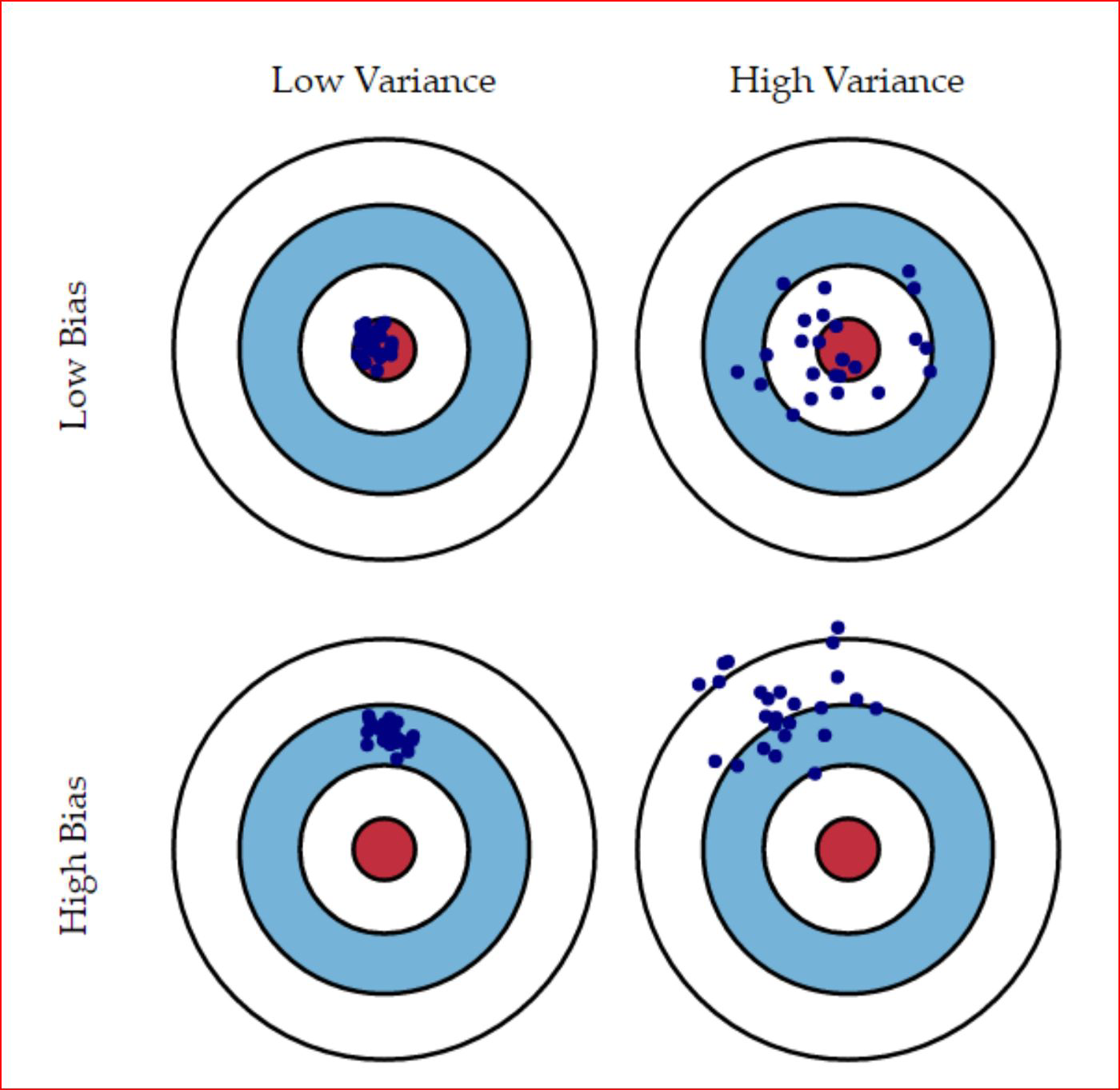
Desirable properties of estimators#
Minimum variance estimators
Prevent overfitting
Unbiased estimators
Prevent underfitting
A model as simple as possible
“A simple model is the best model” - Occam’s Razor
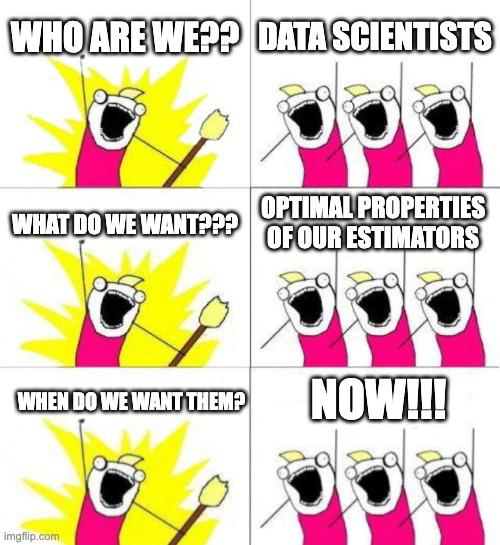
Error Analysis#
The EDA for the errors your model makes
comparing the errors on test / train / validation
expecting them to be close
low error on train but high on validation is a clear sign of overfitting
plotting residuals
expecting no pattern
pattern in residual plots are a sign for underfitting => your model is not complex enough
error_analysis(*lin_reg_model_for_error_analysis())
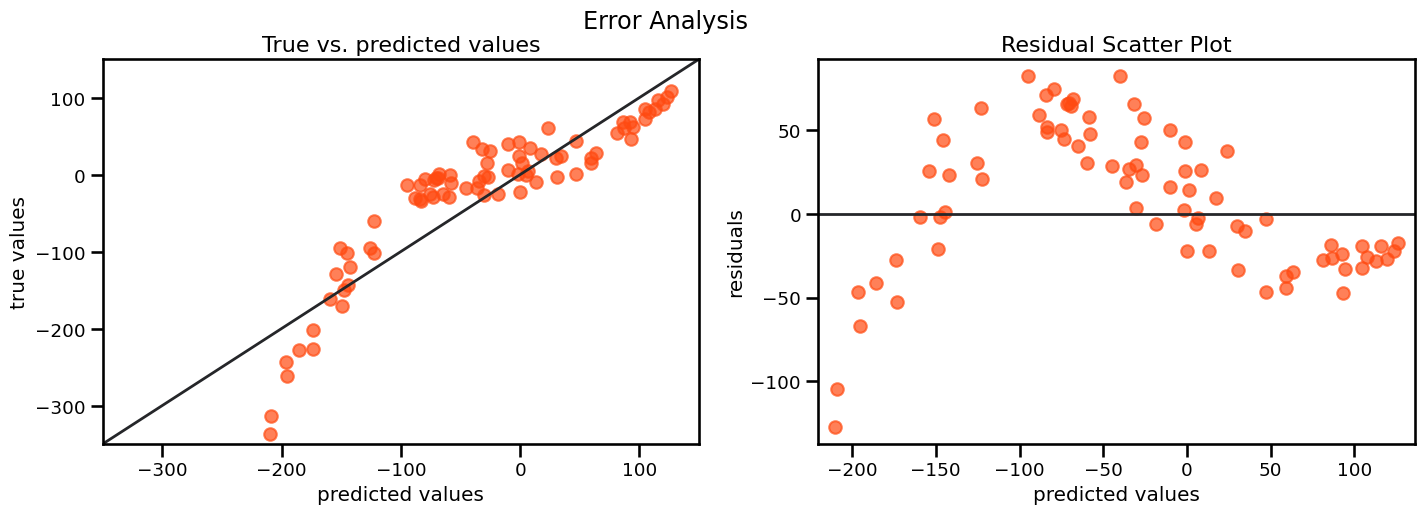
Bias vs. Variance#
High Bias:
more assumptions of the target function
Linear Regression, Logistic Regression
High Variance:
large changes to the estimate when train data changed
Decision Trees, K-Nearest Neighbors …
Low Bias:
fewer assumptions about the target function
Decision Trees, K-Nearest Neighbors, …
Low Variance:
small changes to the estimate when the train data changes
Linear Regression, Logistic Regression
Overfitting vs. Underfitting#
Overfitting:
Reduce the complexity of the model
Get more data
Regularize the model
Underfitting:
Bring in a better model
Feature engineering
Ease regularization parameters
Can you solve this little riddle?#
It’s obvious, isn’t it?#
At least if you apply this function#
This is a nice example taken from University of Berkeley to showcase how you can under do it when it comes to fitting a model.
What kind of error have you done with your personal model?
Resources#
Hands-on ML with scikit-learn and TensorFlow, Geron, Geron
http://scott.fortmann-roe.com/docs/BiasVariance.html
https://medium.com/analytics-vidhya/bias-variance-tradeoff-for-dummies-9f13147ab7d0
Machine Learning - A probabilistic Perspective - Kevin P. Murphy
